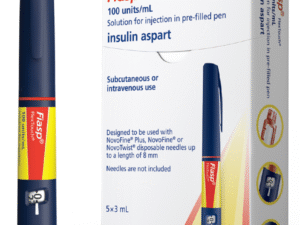Ozempic Injection: The Ultimate Guide
If you’re struggling with type 2 diabetes, high blood sugar, or even weight management, chances are you’ve heard of Ozempic Injection. It’s a game-changer for many, helping to regulate blood sugar, reduce cardiovascular risks, and promote weight loss—all in a once-weekly injection. But what exactly is it, and how does it work?
Let’s break it down in simple terms.
What is Ozempic Injection?
Ozempic Injection (semaglutide) is a GLP-1 receptor agonist, which is just a fancy way of saying it helps your body mimic natural hormones that control blood sugar. It slows digestion, reduces appetite, and helps your pancreas release insulin only when needed. Unlike insulin, it doesn’t force sugar into your cells—it simply prevents blood sugar spikes.
But here’s the kicker: it is NOT insulin. Don’t use it like insulin or mix it up with insulin pens like KwikPens or vials.
What Does Ozempic Injection Do?
People use Ozempic Injection for three major reasons:
-
Lowering Blood Sugar: It helps your body process glucose more efficiently.
-
Weight Loss: By reducing hunger, it makes it easier to eat less and lose weight.
-
Heart Health Benefits: It can lower the risk of heart attack and stroke in people with diabetes.
How is Ozempic Injection Different from Insulin?
Many assume that it works like insulin, but it doesn’t. Here’s how they differ:
| Feature | Ozempic Injection | Insulin |
|---|---|---|
| What it does | Stimulates natural insulin production | Directly replaces insulin |
| How often you take it | Once a week | Multiple times a day |
| Weight impact | Can cause weight loss | May cause weight gain |
| Blood sugar crashes? | Rare | More common |
If you’re using Ozempic Injection, don’t treat it like insulin. It works differently!
Who Should and Shouldn’t Use Ozempic Injection?
✅ Best for:
-
Adults with type 2 diabetes looking to manage blood sugar.
-
People at risk of heart disease, heart attack, or stroke.
-
Those looking for medically-supported weight loss (off-label use).
❌ Not for:
-
Type 1 diabetics (it doesn’t replace insulin).
-
People with diabetic ketoacidosis (DKA).
-
Anyone under 18 years old (not proven safe yet).
-
Those with a history of pancreatitis (safety is unclear).
Ozempic Injection vs. Trulicity: What’s the Difference?
Both it and Trulicity are GLP-1 receptor agonists, but they have different formulas. Some people respond better to it, while others prefer Trulicity. It’s all about how your body reacts!
How to Use Ozempic Injection
-
Pick the right dose – Usually starts at 0.25 mg once a week, increasing over time.
-
Inject once weekly – Same day each week, at any time.
-
Rotate injection sites – Stomach, thigh, or upper arm.
-
Don’t mix with insulin – Keep your medications separate.
Side Effects of Ozempic Injection
Like any medication, it can cause side effects. Some common ones include:
-
Nausea (especially at first).
-
Stomach pain or bloating.
-
Diarrhea or constipation.
-
Low appetite (which helps with weight loss).
Serious side effects like pancreatitis, kidney problems, or allergic reactions are rare but possible. Always check with your doctor!
Final Thoughts on Ozempic Injection
If you’re dealing with type 2 diabetes or struggling with weight loss, it could be a powerful tool. Just remember:
-
It’s not insulin—don’t use it like one.
-
It helps with blood sugar, weight loss, and heart health.
-
Side effects are usually mild, but check with your doctor.
Looking for an effective way to manage diabetes and weight? it might be the solution you need.





Reviews
There are no reviews yet.